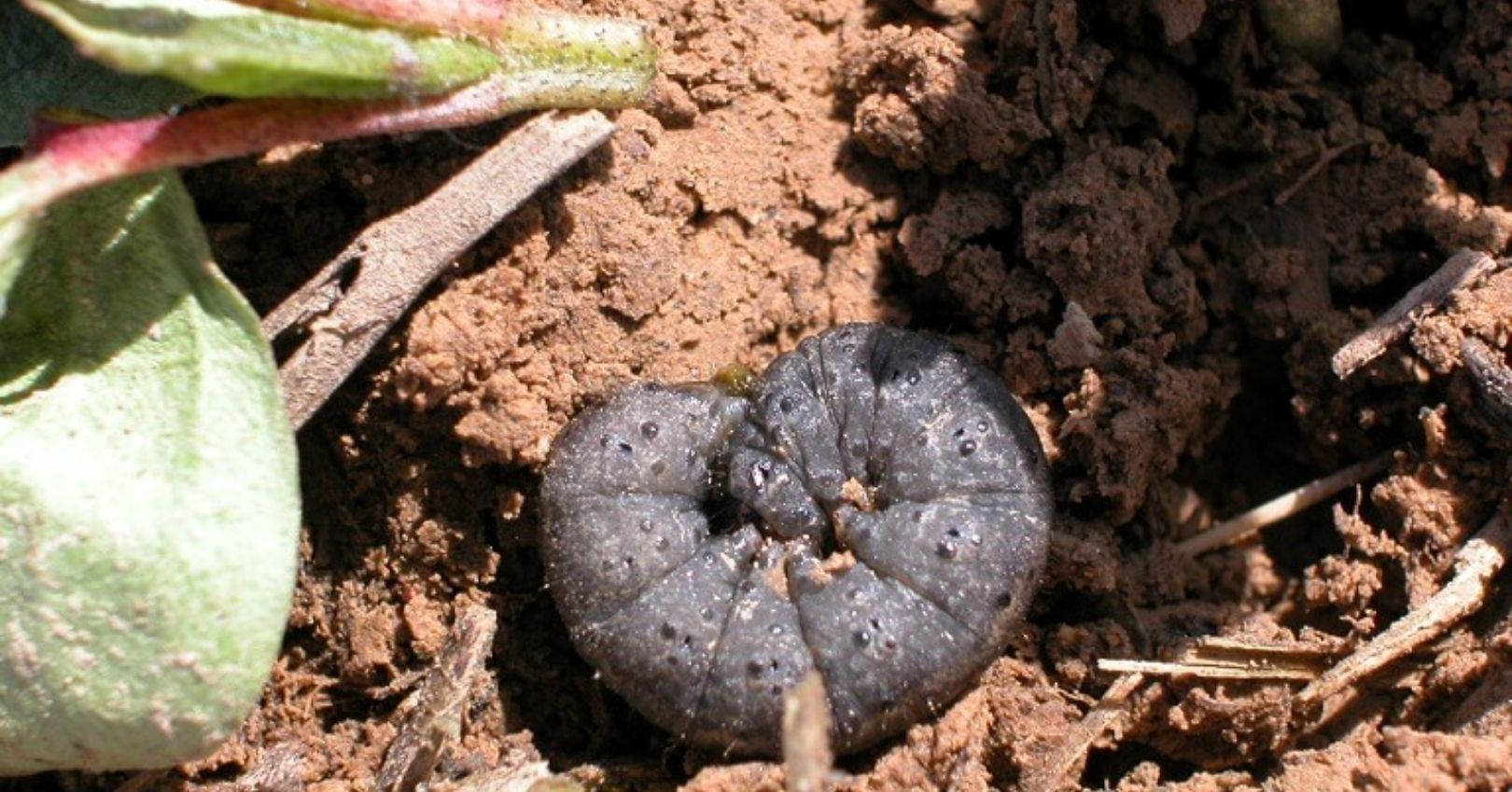Cutworms
Black Cutworm


Description
Adult: Moths have a wingspan of 1.5 inches. The forewings are dark brown and the hind wings are white and gray.
Egg: Spherical, 0.5 mm wide. Initially white, then turn brown with maturity.
Larva: The head is brown with dark spots, and the body color ranges from a light grey to black, reaching 2 inches long at maturity. Pupa: Dark brown, about 1 inch long
Life History
Overwinters as pupae 1 to 5 inches below the soil surface. Adults females emerge in spring and may deposit up to 1,900 eggs during their life span. Eggs are laid on foliage of a wide variety of vegetables including carrots and beets. After 3-6 days, larvae hatch and develop through 6-7 instars over a period of 20-40 days. Later-instar larvae hide in the soil during the day. In Utah, 2-4 generations may occur each season.
Damage
Host crops include a wide variety of vegetables including carrots and beets. Larvae will feed at soil level, often severing the stem.
Variegated Cutworm
Description
Adult: Moths have a wingspan of 1.5 inches. Front wings are a dark mix of grey, brown, and red. Hind wings are white with brown veins and shading. The head, thorax, and abdomen are brown.
Egg: Spherical, 0.5 mm wide that are white and then turn brown.
Larva: The larva grows up to 1.7 inches and ranges from a brown-gray to gray-black color. The main characteristic is a yellow-white spot on each of the four abdominable segments.
Pupa: Mahogany brown color, less than 1 inch long.
Life History
Cutworms overwinter as pupae in the soil, with moth emerging in the spring. Females lay clusters of up to 100 eggs on leaves and stems, and up to 1,400 eggs in their lifespan. Depending on the weather, eggs can hatch occurs within 10 days. There are normally 6 instars throughout the larval development. When the larva reaches maturity, it pupates near the soil surface for 13-33 days. In Utah, 2-4 generations occur each year.
Damage
Larvae kill young seedlings by severing the plant at the soil surface, and by defoliation. Larger larvae hide underneath leaves during the day and feed in the evening. Variegated cutworms are also known to invade greenhouse and high tunnel production.
Cutworm Management
Cultural
- Monitor. Scout crops in multiple location by examining upper leaves of the host plants and looking for eggs, larvae, and feeding damage. Moths can be monitored with pheromone traps.
- Till soil. Tilling the soil at the end of the season will disrupt the cutworm’s overwintering pupation stage which occurs only a few centimeters below the surface.
- Manage weeds. Reduce the amount of weeds near the growing site as they serve as an alternate host.
- Use floating row covers, where practical. This prevents adult moths from laying eggs near host plants.
- Light traps. Black light traps are effective to monitor or kill adult moths in the summer and fall; however later generations are less of a threat to crops. This method can also be used to monitor adult populations.
- Protect seedlings. Consider using a protective barrier such a waxed paper container, can, or aluminum foil
Biological
Variegated cutworms are vulnerable to attack by various entomopathogenic nematodes, such as those in the Steinernematidae and Heterorhabditidae family. Nematodes are more effective in higher-moisture soils.
Chemical
Generally, persistent insecticides are effective toward both black and variegated cutworms. Early application is especially beneficial to younger plants to prevent stem-cutting damage and early defoliation.

